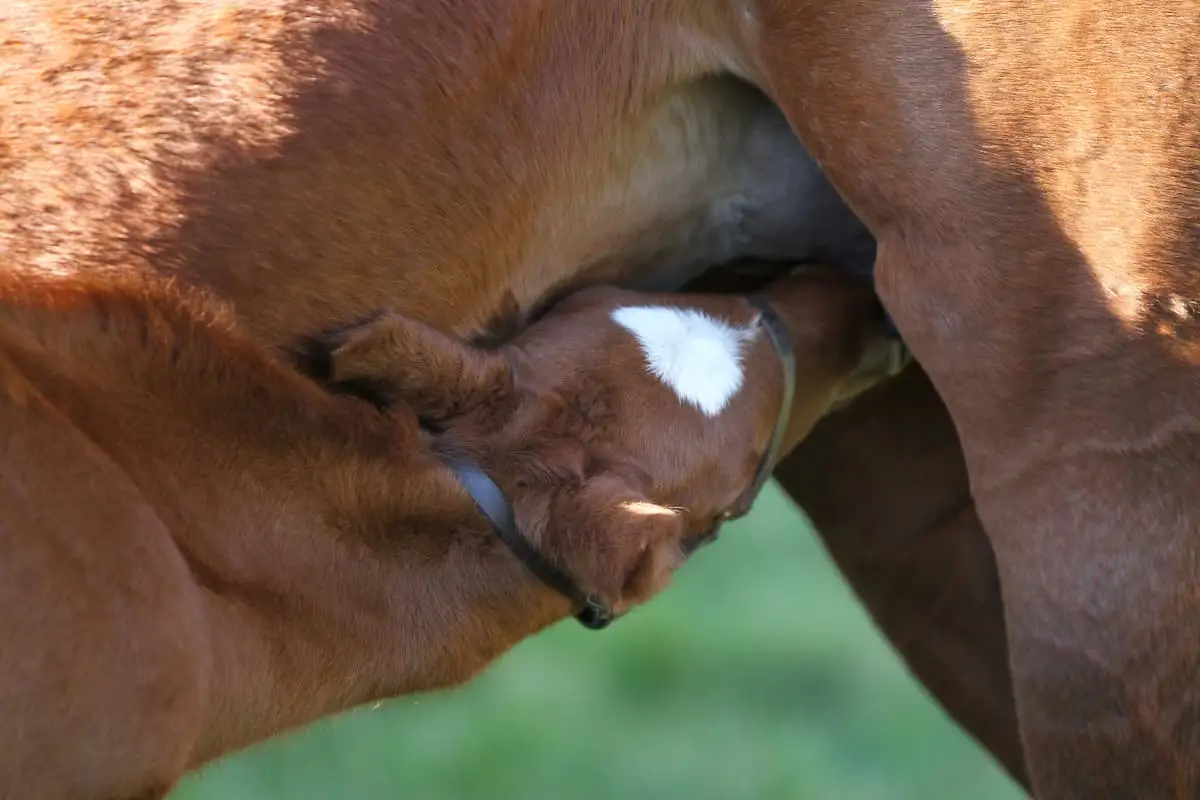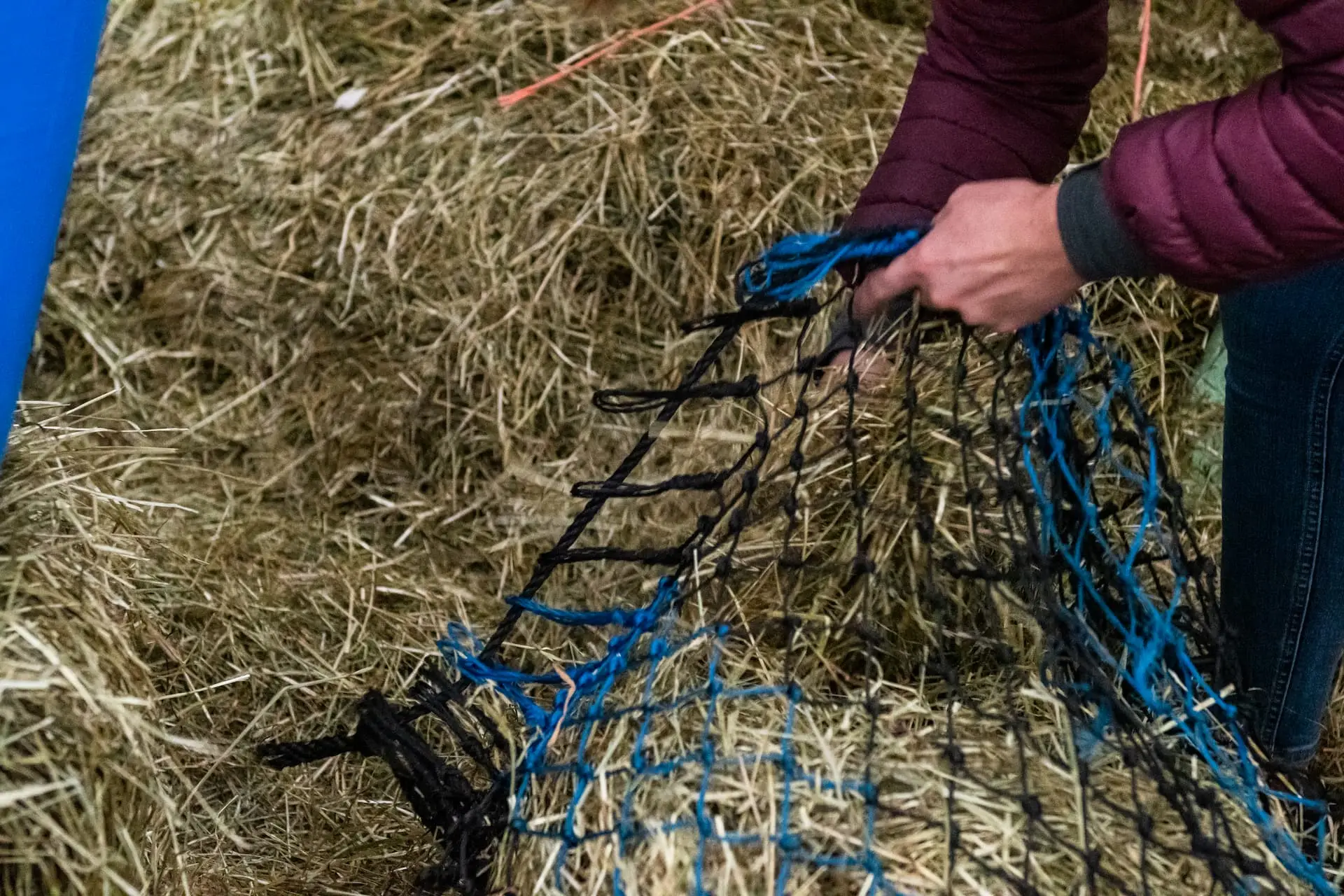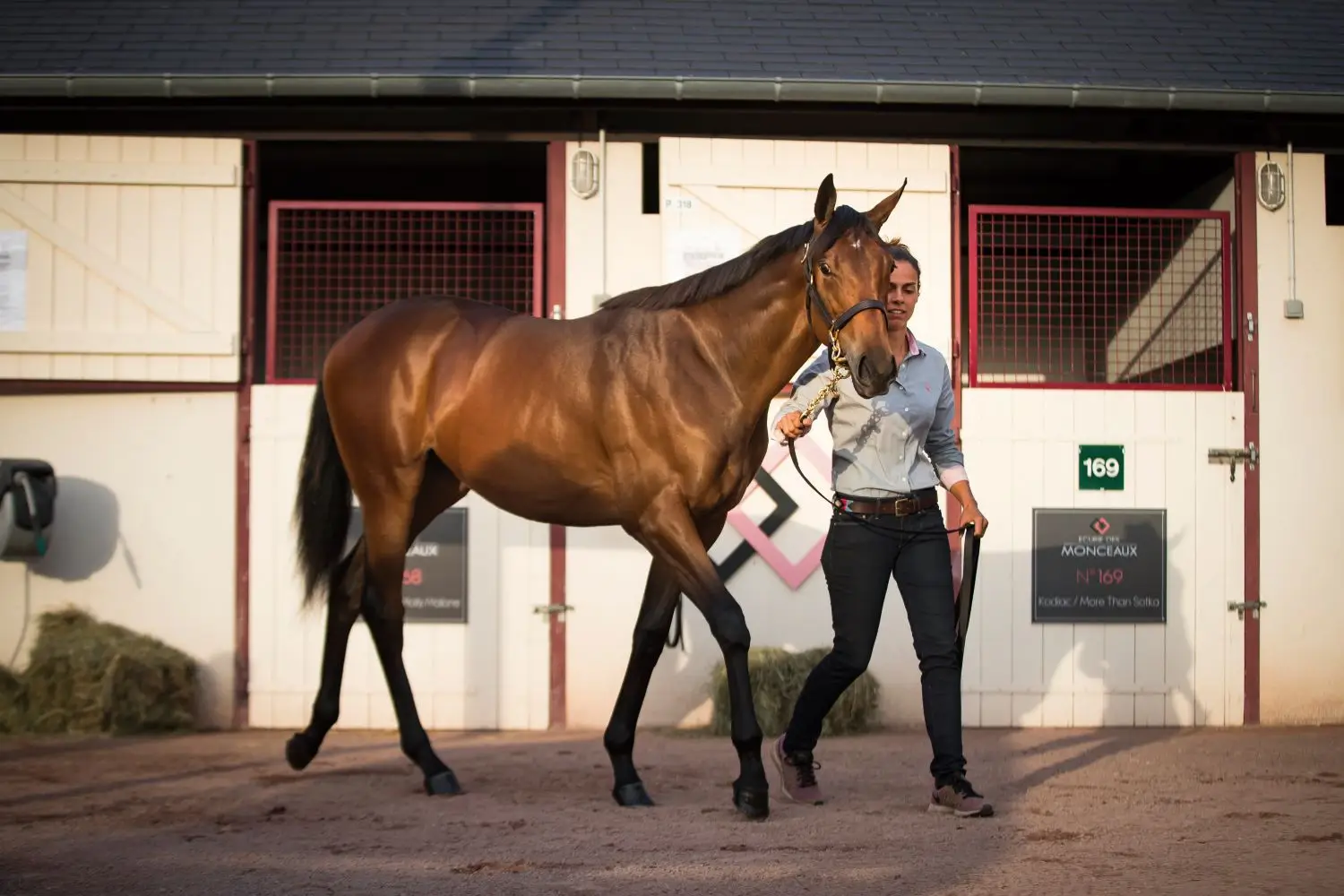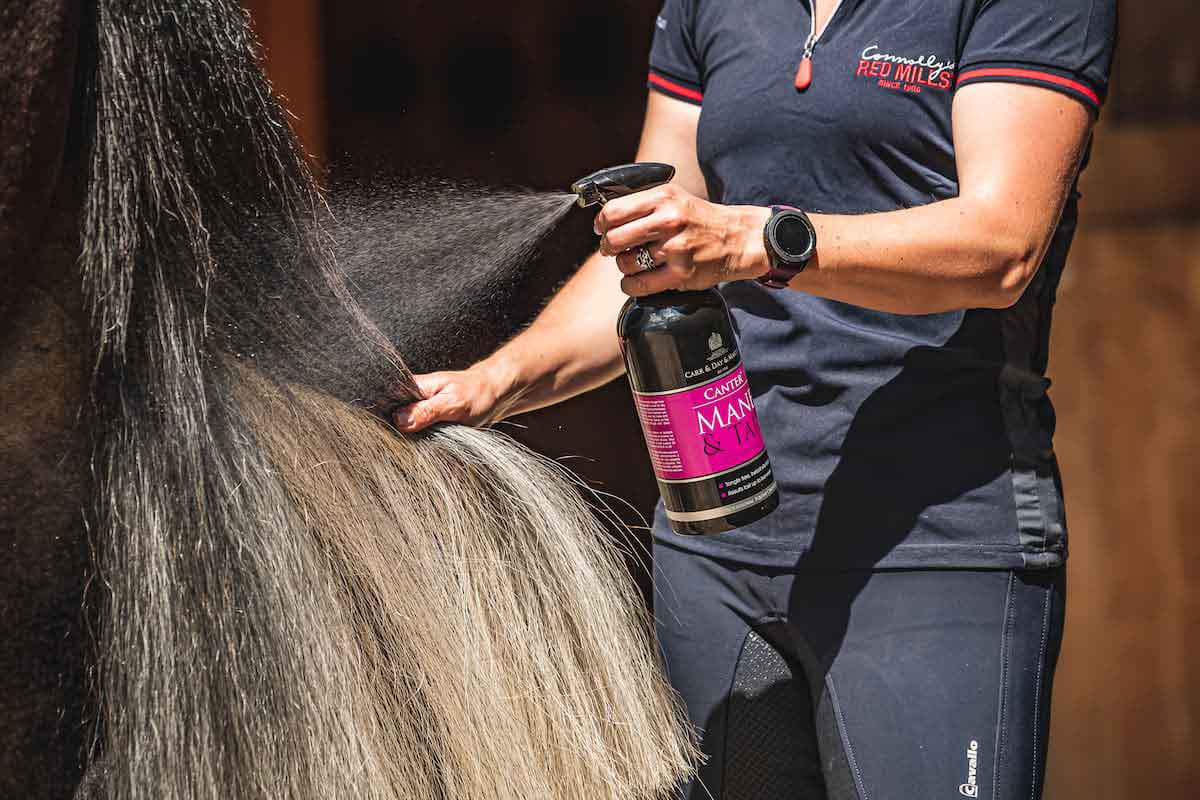Understanding the mare’s nutritional requirements is key for the health of both the mare and the developing foal.
It is important to remember that the foetus does not grow at a constant rate throughout the entire pregnancy and nutritional requirements will vary at different stages.
Pre-pregnancy & covering
Feeding the broodmare and considering her nutritional requirements should begin when preparing the mare for covering before she actually becomes pregnant. To enhance the overall health of the mare before successfully becoming in-foal, the body condition of the mare needs consideration.
Depending on the scale used, the mare’s body condition should be 3-3.5/5 or 5-7/9 (Read more about assessing your horses body condition score here). Mares with body condition scores below 3 at covering, have been shown to be more likely to suffer from irregular ovulation, reduced conception rates and an increased chance of early embryonic loss. Similarly, it is important not to over-feed the mare prior to covering as she could become overweight or obese and cause subsequent health issues. Obesity can be a serious problem and may reduce fertility, increase the risk of problems such as insulin resistance, laminitis and potentially predispose the foal to developmental orthopaedic diseases after birth. Therefore, it is vital that the mare is in suitable condition prior to covering.
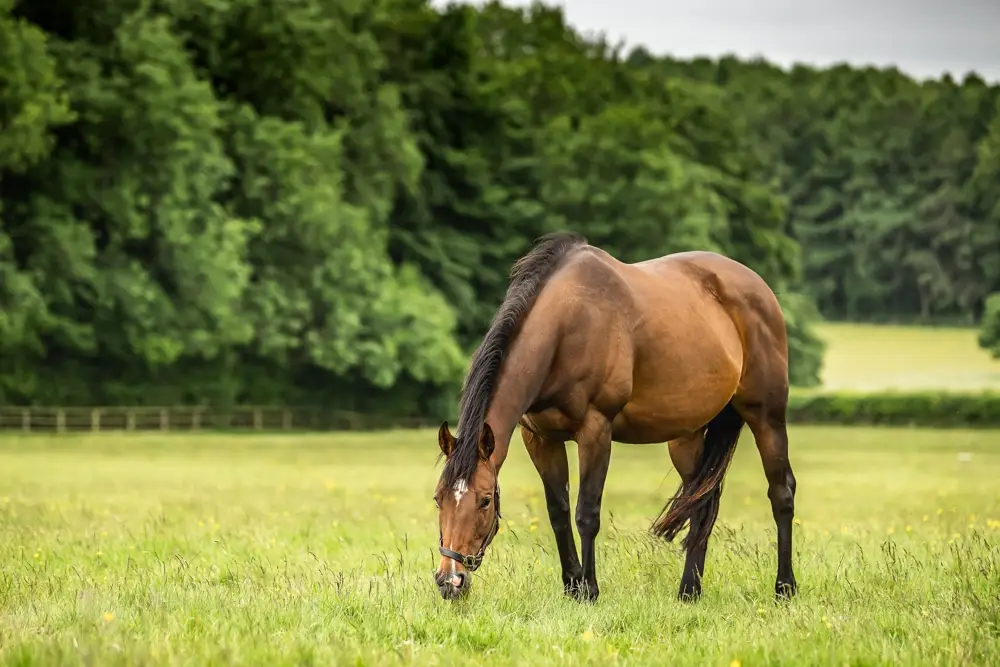
Early Pregnancy
During the first trimester of pregnancy (months 1-4), the foetus is very small, attaining to less than 2% of the mare’s bodyweight, thus its nutrient requirements are relatively low. Therefore, in the past it was thought that the mare’s nutritional requirements did not increase until late pregnancy. However, we now know that this is not the case! Ideally, during early pregnancy the mare’s condition should be maintained. Even for overweight mares, weight loss is not recommended during the first trimester of pregnancy as this has been linked to early embryonic loss. If the mare also has a foal at foot and is simultaneously lactating, weight loss can result in reduced milk production. Therefore, it is recommended that body condition is not altered at this stage to avoid potential negative consequences.
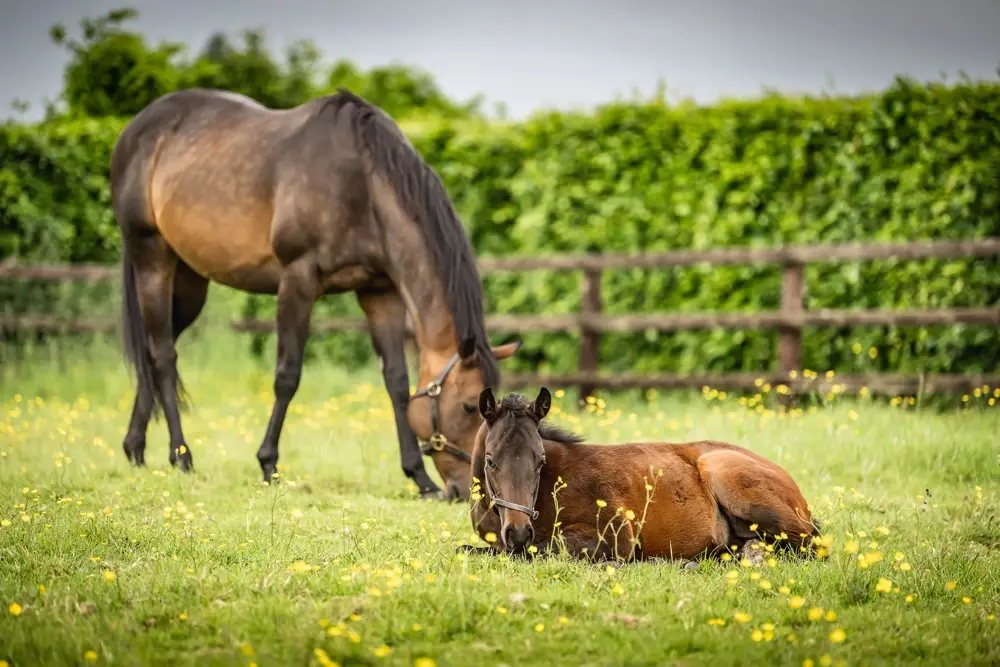
Assuming the mare is not lactating, feeding a good quality forage may provide sufficient calories to maintain condition. However, forage alone is unlikely to provide optimal levels, or the correct ratios of all essential micronutrients. Where additional calories are not needed, micronutrient levels can be met by adding Foran Equine Chevinal to the daily ration to meet vitamin and mineral requirements while maintaining a calorie-controlled diet. However, if the mare requires small quantities of a suitable hard feed alongside the forage to meet micronutrient levels, this can be met through Connolly’s RED MILLS Grocare Balancer.
If the mare has a foal at foot whilst in early pregnancy and therefore is simultaneously lactating, her nutritional requirements will be significantly greater than almost any class of horse, with the exception of racehorses in training. During this period, the mare experiences substantial physiological stress as they must recover from giving birth, produce milk and potentially re-breed. Therefore, optimum nutrition is of vital importance at this stage to ensure the mare’s needs are met. The mare will require additional calories due to such high requirements, which can be obtained from Connolly’s RED MILLS Stud Cubes or Stud Mix.
Mid-Pregnancy
During the second trimester of pregnancy (months 5-8), the rate of foetal growth increases significantly month-by-month (link increasing calorie table). It is recommended that the calorie content of the diet is gradually increased and no abrupt changes occur to cause a sudden oversupply of calories as this can have significant changes on the pregnant mare’s body condition.
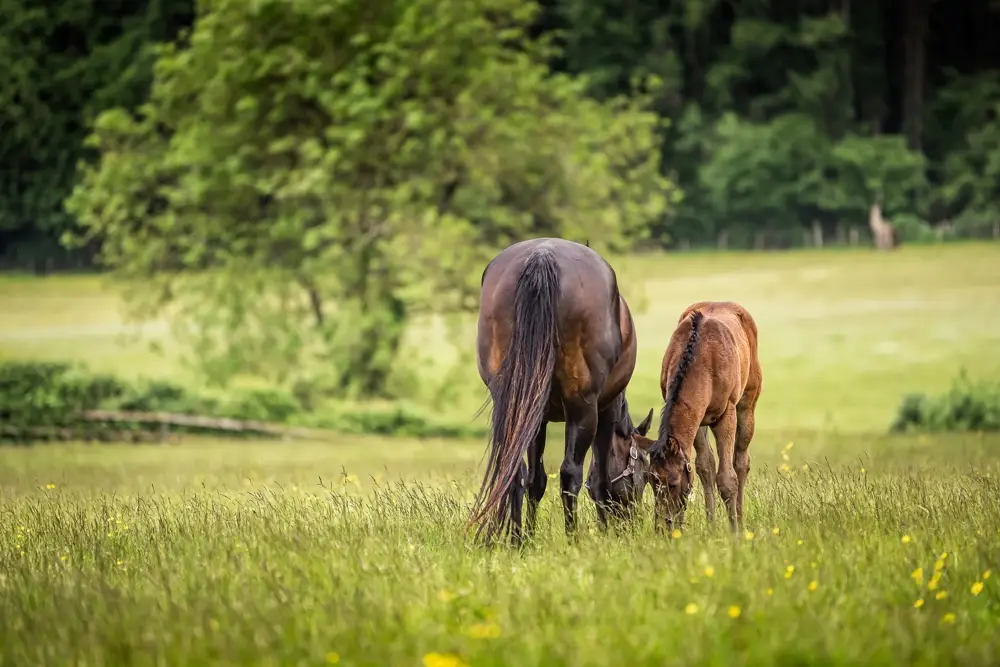
If the pregnant mare does not have a foal at foot and had been on a daily ration of good quality forage and the addition of Foran Equine Chevinal to enhance vitamins and minerals in the diet, she may now require the addition of Connolly’s RED MILLS Grocare Balancer. Similarly, if she was receiving small quantities of Grocare Balancer, she may now need the quantity of this to be increased to meet the pregnant mare’s nutritional requirements. This is also a good quality source of protein for the in-foal mare as the protein requirements will increase at this stage. The availability of good grazing can also have an impact on the amount of hard feed required for your mare and therefore, mares that are ‘good-doers’ may require smaller quantities of hard feed.
If the mare does have a foal at foot, weaning usually takes place in the second trimester and therefore, drying up of lactation will also need to occur at this stage. The pregnant mare’s calorie and protein requirements will subsequently reduce and the use of Connolly’s RED MILLS Stud Cubes/Mix should be gradually reduced to avoid excessive weight gain. However, it is important to ensure the requirements of the pregnant mare are still being met. This can often involve replacing the hard feed with a smaller ration of Grocare Balancer.
Late-Pregnancy
During the final trimester of pregnancy (months 9-11), the mare’s nutritional requirements increase significantly as over 60% of total foetal growth occurs in this period. The pregnant mare’s calorie, protein and vitamin & mineral requirements are significantly increased at this stage to support the growth and development of the unborn foal while also maintaining optimal health for the mare. Connolly’s RED MILLS Stud Cubes/Mix are often added to the diet at this stage in order to meet these requirements and provide adequate levels of nutrients. Undernutrition in the final trimester can cause loss of condition, lower colostrum quality, reduced milk production as the mare will use her own bodily stores to nourish the foetus, resulting in her own needs not being met.
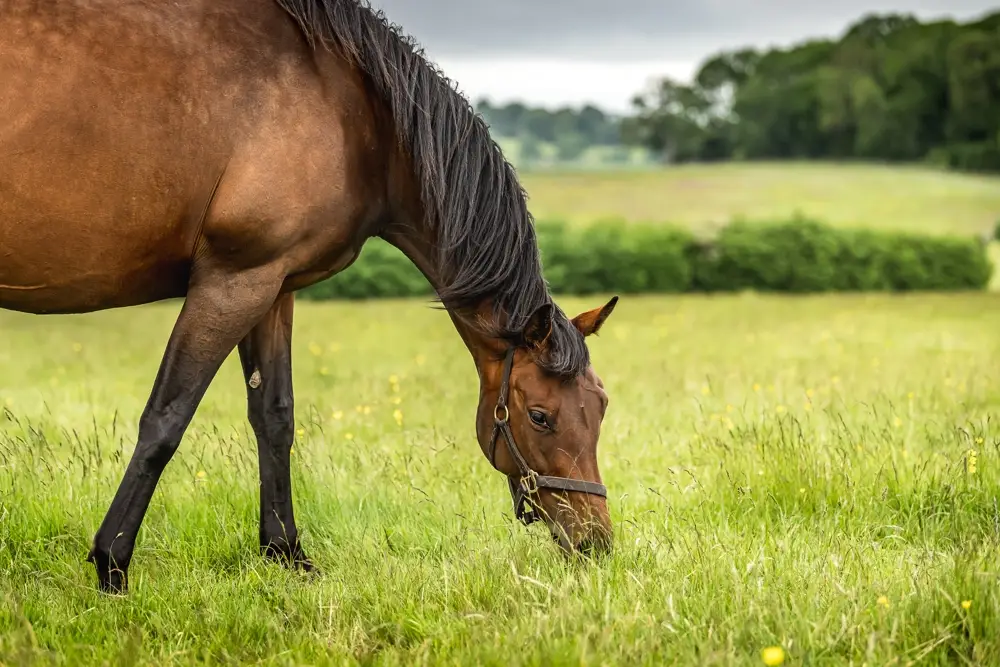
At this stage in pregnancy, the mare’s appetite can sometimes be reduced and so, it may be more suitable to use Connolly’s RED MILLS Grocare balancer to meet protein and micronutrient requirements whilst not needing the mare to each high quantities of hard feed. Therefore, there are options to suit individual pregnant mares while ensuring their requirements are being met.
Although there are many physiological changes occurring at this stage for both the mare and foal, one of the key changes are that the unborn foal will start to lay down copper stores in their liver. It has been found in research that supplementing the mare with copper in the final trimester of pregnancy can increase the live foal’s copper stores. This is beneficial for bone formation, soft tissue development and metabolic roles in the body.
Although the foal is already born at this stage, nutritional demands are higher than ever, exceeding those of a racehorse in full-training. Therefore, nutrition cannot be ignored as soon as the foal is born. Depending on the time of year, lactation periods for thoroughbred mares can often coincide with winter months and therefore poor grazing availability. We often recommended for stabled mares on high amounts of preserved forage that they use Connolly’s Red MILLS Stud Cubes/Mix alongside a small amount of Grocare Balancer to meet amino acid and micronutrient levels that are often boosted by good quality grass. This is vital to ensure good quality milk and adequate milk production to support the foal’s growth and development. Another beneficial addition to the mare’s diet at this stage is the Foran Equine Cal-Gro to support such high demands during peak lactation. This contains calcium, phosphorus, vitamin E, manganese, lysine, silica, copper & zinc to help support the physiological change for both mare and foal.
In providing optimum nutrition for the mare throughout pregnancy and during lactation, you can ensure all requirements are met and the mare and foal receive everything they need to support their growth and development.
